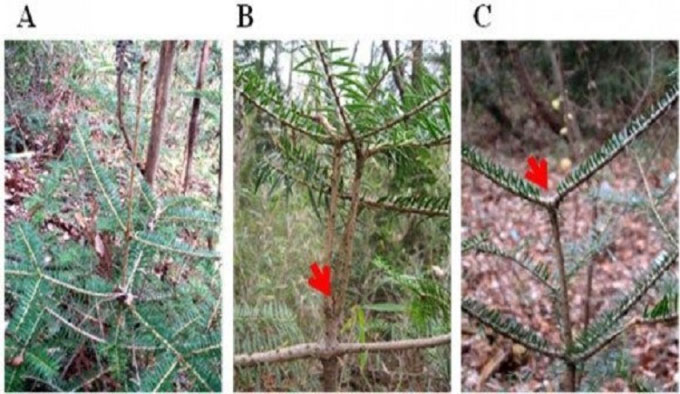Researchers Discover Strange Characteristics in Plants Surrounding Fukushima Nuclear Plant Due to Residual Radiation from the 2011 Incident.

Pine tree near Fukushima plant does not sprout. (Photo: Japan Today).
In a study published on January 15 in the journal Plants, scientists describe changes in plant structures in the area near the site of the partial meltdown at Fukushima Dai-ichi Nuclear Power Plant (FNPP) following an earthquake and tsunami that damaged the plant’s cooling system. The 9.1 magnitude earthquake occurred in the Pacific Ocean, generating massive waves that destroyed backup systems at the plant.
After the accident, ionizing radiation and radioactive materials were released into the surrounding environment, affecting nearby vegetation. The plants studied exhibited several unusual characteristics in the years following the incident. Ionizing radiation is a type of energy that removes electrons from atoms and molecules in air, liquids, and solids, posing potential risks to living organisms.
To draw conclusions, the research team examined growth rings, the positions on the plants where leaves, petals, or needles protrude from the central point. Instead of branching as usual, the growth rings developed abnormally, with some not sprouting at all, unlike unaffected trees. Furthermore, the number of unusual mutations corresponded to the level of radiation the plants were exposed to.
The leading author of the study, Dr. Gian Marco Ludovici from the University of Rome Tor Vergata, noted another peculiar characteristic they discovered: the absence of buds in Japanese larch and red pine trees. This phenomenon occurred after the spring of 2012 and peaked in 2013, but the exact reason remains a mystery. The study provides further evidence that ionizing radiation from the nuclear incident can alter the structure of coniferous trees. The researchers indicated that the abnormalities they found are similar to those observed in Scots pine trees in the contaminated area within a 30 km radius of the Chernobyl nuclear plant following the 1986 disaster.


















































